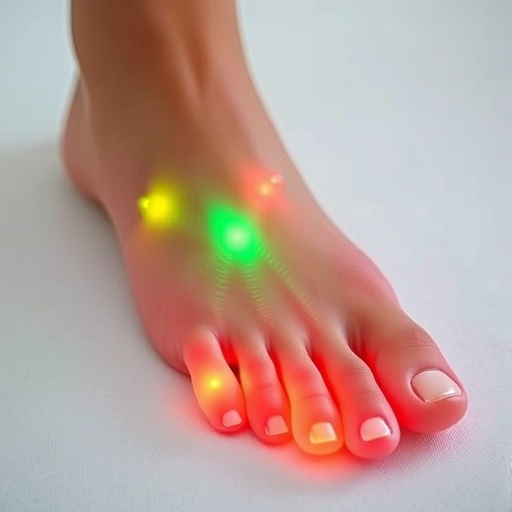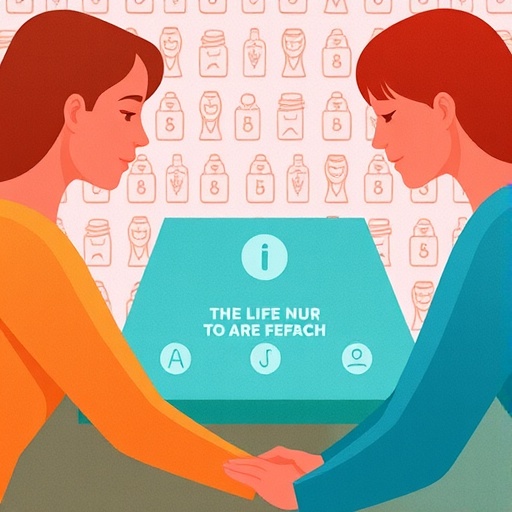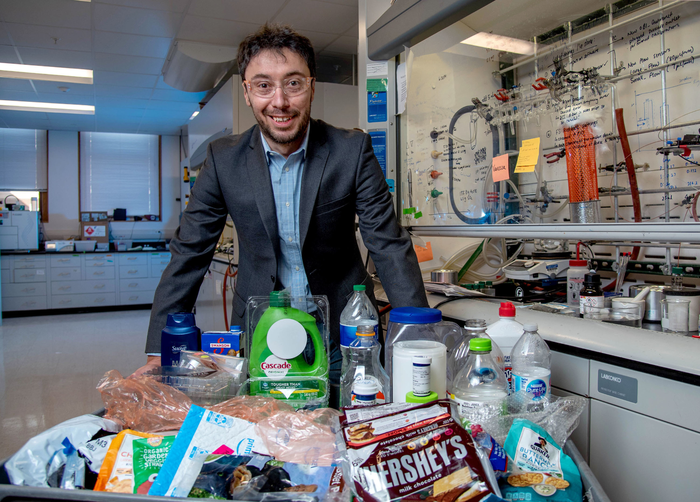A groundbreaking new study sheds light on a revolutionary approach to diabetic foot regeneration, a condition that threatens the mobility and quality of life for millions around the globe. Researchers Wang, Jin, and Guo have unveiled an innovative treatment strategy that combines the power of trace elements, exosome modules, and self-adaptive hydrogels. This confluence of materials and biological mechanisms presents a comprehensive solution, leveraging the intricate circuitries of complement, mitochondria, and autophagy. With the promises of improved healing and greater patient outcomes, this research stands as a beacon of hope in regenerative medicine.
The study, prominently featured in Military Medicine Research, highlights a multifaceted approach to tackle the challenges posed by diabetic foot ulcers. These ulcers often result from neuropathy and inadequate blood circulation, leading to infections and, ultimately, limb loss if left untreated. Conventional treatment options may lack efficacy, which drives the need for innovative therapies that can facilitate quicker and more effective healing processes. This research aims to address those concerns directly by focusing on the cellular microenvironments that are pivotal for tissue regeneration.
At the heart of this pioneering approach is the employment of trace elements that serve as vital cofactors for various biological reactions. These trace elements play crucial roles in enhancing the function of cells involved in the wound healing process. By dictating the behavior of exosome modules, these substances can effectively orchestrate cellular interactions necessary for regeneration. This finding illuminates the significance of nutrient supplementation in the healing process, thereby presenting a simple yet profound means of enhancing patient care.
Exosomes, nano-sized vesicles secreted by cells, serve as key players in intercellular communication. Notably, they are rich in proteins, lipids, and nucleic acids that convey crucial information to neighboring cells, thereby modulating their activity. This study’s introduction of trace element-dictated exosome modules marks a significant leap forward, providing insights into how these vesicles can be tailored to address specific issues faced by diabetic patients. By leveraging cellular messaging pathways, the research proposes a method to enhance the regenerative capacity of surrounding tissues effectively.
Additionally, the researchers introduced a self-adaptive dual-network hydrogel, a sophisticated material engineered to respond dynamically to changing biological conditions. This hydrogel is designed to maintain a moist wound environment, which is critical for optimal healing. Its unique dual-network structure allows for the simultaneous release of trace elements and exosomes at regulated rates, meticulously replicating the natural healing process while addressing the complex needs of the diabetic foot.
The implications of this hydrogel extend beyond mere moisture retention; it plays a delicate role in modulating the microenvironment of the wound site. By fostering a conducive ambience for cellular activities—such as migration, proliferation, and differentiation—the hydrogel acts as a supportive scaffold. This duality of function ensures that the healing process can progress without being hampered by external factors or biofilm formation, which is otherwise a common hindrance in ulcer healing.
One of the standout features of this study is the incorporation of complement-mitochondria-autophagy circuitry into the healing equation. This circuitry ensures the coordination between innate immune responses and cellular metabolism, an essential aspect often overlooked in healing processes. The complement system, well-known for its role in immune surveillance, can enhance inflammation at the site of the wound, thus elevating the body’s natural healing response when appropriately modulated.
The mitochondria, the powerhouses of the cell, are crucial for energy production, particularly when cells are under stress from oxidative environments, as is the case with diabetic conditions. Autophagy, a cellular degradation and recycling process, is fundamental in maintaining cellular homeostasis and promoting cell survival under adverse conditions. By elucidating the interplay between these biological arms, the authors indicate that a more synchronized and targeted approach can yield superior results in foot regeneration.
Patient responses and recovery times are pivotal measures of success in any treatment. This research promises to not only enhance the speed of recovery but also to empower patients suffering from diabetic complications with tools that could prevent further health deterioration. With effective treatment pathways in place, individuals can regain their mobility, alter their quality of life, and reduce the burdens associated with chronic conditions and their long-term implications.
The experimental approach undertaken by the authors involved rigorous evaluations to validate the effectiveness of their proposed methods. Laboratory tests were coupled with real-world applications to ensure that the findings were not only theoretically sound but also practically applicable. The encouraging results from these experiments underscore the significant impact this research could have on clinical practices, positioning it at the forefront of diabetic wound care.
Next steps involve further clinical trials to confirm these findings and assess their applicability across varied patient demographics. With the potential for significant breakthroughs in how diabetic foot ulcers are treated, the anticipation surrounding further research is palpable. Should these findings be replicated in larger studies, we could witness a paradigm shift in regenerative medicine practices, expanding treatment possibilities for millions at risk of diabetic complications.
In conclusion, the integration of trace element-dictated exosome modules along with self-adaptive dual-network hydrogels heralds a new era in regenerative therapy for diabetic foot ulceration. This innovative amalgamation not only enhances the healing response but also empowers healthcare providers and patients alike. As research progresses, the hope is to transform the current landscape of diabetic care, leading to a future where foot ulcers become a relic of the past, significantly decreasing the associated morbidity and mortality rates.
This thought-provoking study illuminates a critical area of research, revealing previously uncharted territories of possibility in the intersection of material science and biology. It positions itself as a centerpiece within the growing tapestry of regenerative medicine and offers insight into the powerful relationships between trace elements, exosomes, and advanced hydrogels in healing processes. As the medical community grapples with the challenges posed by chronic conditions, such innovative strategies will no doubt pave the way for a brighter and healthier future.
Subject of Research: Diabetic Foot Regeneration
Article Title: Trace element-dictated exosome modules and self-adaptive dual-network hydrogel orchestrate diabetic foot regeneration through complement-mitochondria-autophagy circuitry.
Article References:
Wang, SQ., Jin, MJ., Guo, ZK. et al. Trace element-dictated exosome modules and self-adaptive dual-network hydrogel orchestrate diabetic foot regeneration through complement-mitochondria-autophagy circuitry. Military Med Res 12, 71 (2025). https://doi.org/10.1186/s40779-025-00658-4
Image Credits: AI Generated
DOI: 10.1186/s40779-025-00658-4
Keywords: Diabetic foot ulcers, regenerative medicine, exosomes, trace elements, dual-network hydrogel, complement system, mitochondria, autophagy, wound healing.
Tags: cellular microenvironments in tissue repaircomprehensive solutions for diabetic foot carediabetic foot ulcer management strategiesenhancing healing with mitochondria and autophagyexosome modules in regenerative medicineimproving patient outcomes in diabetesinnovative treatment for diabetic ulcersnovel therapies for neuropathy-related woundsresearch advancements in regenerative medicineself-adaptive hydrogels in healthcaresmart hydrogel for diabetic foot regenerationtrace elements in wound healing






